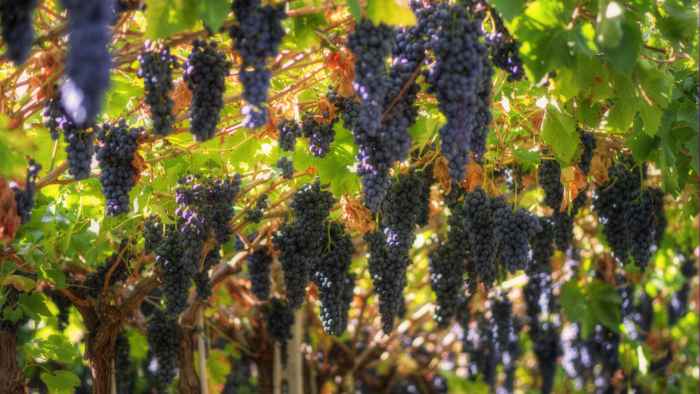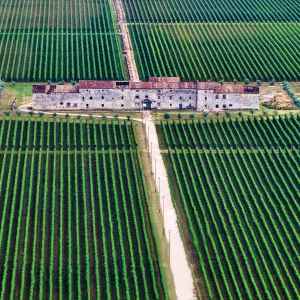Blog
Valpolicella, a wine story.
Fast Private Jet can boast of its headquarter location being a worldwide famous viticulture area in the province of Verona, east of Lake Garda in the north-east of the Italian territory. From here, we organize your private jets flights and we take care of all your requests.
The agricultural and marble-quarrying hilly region of Valpolicella is famous also for the wine production. Valpolicella ranks just after Chianti (Tuscany) in the whole Italian Denominazione di Origine Controllata (DOC) wine producers list. Most of the wines made in the Valpolicella DOC are red and usually contain a sizable amount of the area's most distinguished grape, Corvina. Other grapes used in the production of Valpolicella wine most often include Rondinella and Corvinone, but also Molinara, Rossignola, Negrara, Barbera, Sangiovese and Bigolona.
The winemaking tradition in the region has existed since the era of the ancient Greek. The name "Valpolicella" appeared in charters of the mid-12th century, combining two valleys previously thought of being independent. The meaning of the name of the valley origins from the Latin and the Greek mix of "Val= valley; Poli= multiple; and Cella= cellar." Today Valpolicella's economy is heavily based on wine production. The region, colloquially called the "pearl of Verona", has also been a preferred location for rural vacation villas.
The red wine known as Valpolicella is typically made from three grape varieties: Corvina veronese, Rondinella and Molinara. Most basic Valpolicellas are light, fragrant table wines produced and released only a few weeks after the harvest. Valpolicella wine divideds into 3 types: Valpolicella Classico, which is made from grapes grown in the original Valpolicella production zone. Valpolicella Superiore has been aged in wood for at least one year and has an alcohol percentage of at least 12%. Valpolicella Ripasso is a form of Valpolicella Superiore made with partially dried grape skins that have been left over from fermentation of other wines such as Amarone or Recioto.
The wines are produced in a wide variety of styles ranging from basic nouveau table wines, full bodied red wines, sweet dessert wines and even sparkling spumante. The basic Valpolicella are light-bodied, are often noted for their sour-cherry flavor and have a moderate alcohol level. Full-bodied Recioto and Amarone wine reach alcohol levels of 15–16%.
Recioto della Valpolicella is a sweet dessert wine, that has been historically associated with the region and can trace its origins to winemaking techniques of the ancient Greek. Its name is associated to the extending lobes of a grape cluster, that appear as "ears" at the top of the cluster. The exposed grapes on the "ears" usually receive the most direct sunlight and become the ripest grapes on the cluster. Grapes destined for this type of wine are often grown in the most ideally situated hillside vineyards. They are taken to special drying rooms where they are left to desiccate, while the sugar concentration remain inside the grape.
Valpolicella Ripasso owns its name to the repass technique, through which the pomace of leftover grape skins and seeds from the fermentation of Recioto and Amarone are added to the batch of Valpolicella wines for an extended period of maceration. The additional food source for the remaining fermenting material helps to boost the alcohol level and body of the wines while also filter the additional tannin, glycerine and some phenolic compounds that contribute to a wine's complexity, flavor and color. An alternative method is to use partially dried grapes, instead of leftover pomace, which contain fewer bitter tannins and even more phenolic compounds.
Amarone is unique in the wine world. Typically very alcoholic, full-bodied and ripe-tasting wines are produced in very warm climate regions, where the grapes are able to build up large amounts of sugar while ripening on the vine. The Valpolicella region is characterized as a "cool climate region" where acid levels are usually maintained, and sugar build occurs more slowly in the vine. Grapes destined for Amarone are the last grapes in Valpolicella to be harvested, getting as ripe as they can before mold and rot set in. The sugars in the grapes are then concentrated by a process of desiccation where they are kept in special drying rooms from three to four months. During this time over a third of the water is removed as the grapes shrivel into raisins. This method produces more concentrated grapes, that manage to maintain the acid balance of a cool-climate grape.
If we manage to create an irresistible desire to taste a glass of our local wine, do not hesitate to ask us. We will make it happen on board your private jet, from wherever you will take off.


